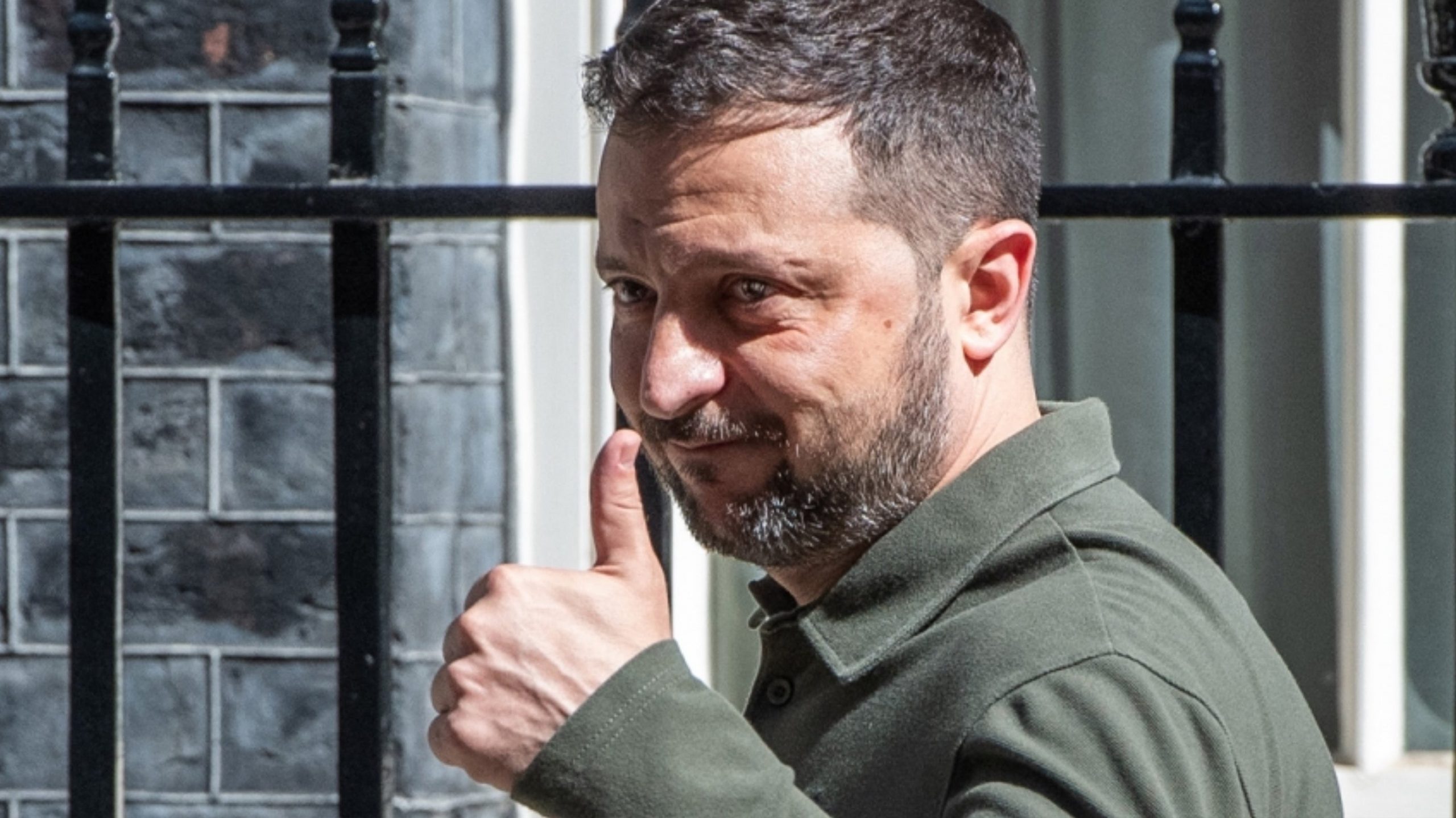World News
Croatia adopts the euro and joins the Schengen area
Reading Time: 3 minutes
Steph Deschamps / January 1, 2023
Croatia was counting the hours Saturday before switching to the euro and entering the Schengen area of free movement, two major steps for this small country that joined the European Union in July 2013. And it was at midnight that the country said goodbye to its currency, the kuna, to become the twentieth member of the euro zone. At the same time, Croatia becomes the 27th state to join the Schengen area, a vast zone in which more than 400 million people can travel freely without internal border controls.
This Sunday, European Commission President Ursula von der Leyen will come to Croatia to mark the two events. Croatian leaders regularly emphasize the expected benefits for this Balkan country of 3.9 million people.
Joining the euro zone and the Schengen area are “two strategic objectives for further integration into the EU,” conservative Prime Minister Andrej Plenkovic insisted Wednesday. For experts, the changeover to the euro will help protect the Croatian economy, one of the weakest in the EU, in a world subject to galloping inflation, a serious energy crisis and geopolitical insecurity since the start of the Russian invasion of Ukraine.
In november, inflation reached 13.5 per cent, compared to 10 per cent in the euro zone. Eastern European countries that are members of the EU but not in the euro zone, such as Poland and Hungary, have proved even more vulnerable to rising inflation. “The euro certainly brings economic stability and security,” said Ana Sabic, a Croatian central bank official.
The benefits of joining the euro will be felt by all segments of society – individuals, companies and the state, she insists. In particular, experts cite the elimination of exchange rate risks and better borrowing conditions in the face of economic difficulties. The euro is already very present in Croatia. About 80 per cent of bank deposits are denominated in euros, the Mediterranean country’s main partners are in the euro zone and tourism, which accounts for 20 per cent of GDP, is driven by a large European clientele.
Croatia has received four times as many tourists as it has inhabitants this year. Joining the Schengen zone will also give a boost to tourism. The long lines at Croatia’s borders with its European neighbors, Slovenia and Hungary, will be a thing of the past. This Sunday, 73 border crossings will close. At airports, the change will take place on March 26, for technical reasons.
At the same time, the situation at the country’s borders with its non-EU neighbors – Bosnia, Montenegro and Serbia – will not change much: Croatia already applies the Schengen rules there. Cracking down on illegal immigration remains a major challenge. Since the country joined the EU, it has inherited the onerous task of protecting an external land border of more than 1,350 km, most of which is with Bosnia.
Croatia is on the so-called Western Balkan route, which is used by migrants, but also by traffickers of arms, drugs and human beings. The border with Bosnia is the most difficult to manage, not only because of its length, but also because of its rugged terrain. After the decline in illegal crossings due to the health crisis, Croatia registered 30,000 illegal migrants in the first ten months of 2022, an increase of 150 percent over the same period last year.
Croatians have mixed feelings about joining the euro and the Schengen area: while they are generally happy about the end of border controls, the change of currency inspires mistrust. “We’re going to cry for our kuna, prices are going to explode,” laments Drazen Golemac, a 63-year-old pensioner in Zagreb. “Nothing changes on January 1, everything has been calculated in euros for two decades anyway,” said Neven Banic, an employee. Croatians have been counting in euros for a long time for the price of valuable goods, such as cars or apartments.
Continue Reading
World News
Trump promises Zelensky to “end the war” in Ukraine in phone call

Reading Time: 2 minutes
Sylvie Claire / July 21, 2024
Donald Trump and Volodymyr Zelensky spoke on the phone on Friday, with the former US president claiming to have promised the Ukrainian president to “end the war” between Ukraine and Russia should he return to the White House. “As your next president of the United States, I will bring peace to the world and end the war that has cost so many lives,” said the Republican presidential candidate.
Donald Trump frequently claims that he would be able to put an end to the conflict in Ukraine very quickly on his return to power, but never provides details of how he would achieve this. Volodymyr Zelensky confirmed the phone call, during which he congratulated the billionaire on his official nomination the previous day as the Republican Party’s presidential candidate.
Donald Trump’s frequent praise of Russian President Vladimir Putin, as well as his criticism of other Nato countries, is causing concern among Ukraine’s Western allies. In February, he threatened that, if he returned to the White House, he would no longer guarantee the protection of Atlantic Alliance countries against Russia if they did not pay their share, even claiming that he would “encourage” Moscow to attack them. The former American president also used his power over the Republicans to block a $61 billion military aid package for Kiev for months in Congress, which was finally adopted at the end of April.
In his posting on X on Friday, Volodymyr Zelensky said he had “agreed with President Trump to discuss, in a face-to-face meeting, the steps to be taken towards a just and lasting peace” in Ukraine.
World News
Former Ukrainian far-right MP murdered in Lviv: “All leads are being investigated, including Russia”

Reading Time: < 1 minute
Steph Deschamps / July 21, 2024
In a message on Telegram, the Ukrainian National Police said she had succumbed to her injuries in hospital after being the target of an assassination attempt.
“I always say that no place is safe in Ukraine,” lamented Lviv mayor Andriï Sadovy, denouncing a ‘heinous murder’ and offering his condolences to the victim’s relatives.
According to the Ukrainian Prosecutor’s Office, the attack took place on Friday evening, at around 7.30pm, when an unidentified individual fired at Irina Farion, seriously wounding her in the head. “All surveillance cameras are being checked, witnesses are being interviewed and several districts (of Lviv) are being examined. All leads are being investigated, including the one leading to Russia”, reacted Ukrainian President Volodymyr Zelensky on X on Saturday.
Interior Minister Igor Klimenko told a briefing in Lviv on Friday evening that the suspected killer could have been lurking around Irina Farion’s home for several days.
According to him, investigators are currently focusing on the possibility of a murder motivated by a “personal grudge” linked to the victim’s activities, but are not ruling out a “commissioned assassination” either.
The 60-year-old language teacher and linguist was a member of parliament for the nationalist Svoboda party between 2012 and 2014.
World News
China: at least six dead in Zigong shopping mall fire

Reading Time: < 1 minute
Sylvie Claire / July 18, 2024
At least six people died in a shopping mall fire on Wednesday in Zigong, southwest China, and thirty others were rescued, China’s state broadcaster CCTV said. “Rescue teams are continuing their search,” the media outlet added.
Images broadcast by the channel and others shared on social networks show thick black smoke rising from a building overlooking a shopping street in this city 1,600 kilometers from the capital Beijing, in the southwestern province of Sichuan.
The fire broke out in the early evening in a shopping mall at the foot of a 14-storey building, CCTV reported.
“At 8:20 pm, the fire was extinguished and 17 people were rescued. Others are still trapped, and rescue operations are continuing”, said the station in an initial report on the situation.
Fires and other fatal accidents are frequent in China, due to the sometimes lax application of safety standards. In January, at least 39 people perished in a store fire in central China. According to the authorities, the fire started in the basement of a store when workers “broke the rules” during construction work. At the time, Chinese President Xi Jinping called for lessons to be learned from the disaster to prevent further tragedies. The same month, a fire in a residential building claimed at least 15 lives.














